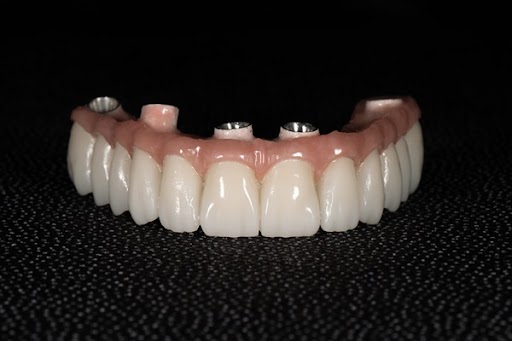Full Arch Treatment: Before, During, and After

Full arch treatment offers a stable, natural-looking way to replace an entire row of teeth with dental implants and false teeth. The results are natural-looking and functioning, while preventing gum and bone resportion. Knowing what happens before, during, and after can help reduce stress and support a smooth healing process.
Determining full arch treatment candidacy
Full arch treatment serves people who are missing many teeth, dislike loose dentures, or need a full rebuild of a failing dental arch. Good candidates commit to careful oral hygiene, regular checkups, and healthy lifestyle choices. Bone quality, medical conditions, and goals guide the final plan. Consulting with an experienced oral surgeon clarifies whether full arch treatment fits each patient's needs and what steps lead to the best outcomes.
Before full arch treatment: Planning and preparation
Success begins with a detailed evaluation. The oral surgeon reviews health history, takes 3D imaging, and maps the bite plan to implant positions and the shape of the new teeth. Sedation options, timeline, and costs are explained in plain language so patients have clear expectations. To prepare well, patients should set up a few essentials ahead of time:
- Arrange a responsible ride for transportation after the surgery and help at home for the initial 24 hours of recovery.
- Stock soft, protein-rich foods (e.g., eggs, yogurt, soups) and plenty of water.
- Gather cold packs, prescribed medication (when able), and gauze.
Also, note that tobacco and nicotine products of any kind are strictly prohibited during this process and possibly after, as they are known to inhibit healing and increase bleeding significantly. It can also cause the body to reject the implant after installation.
During full arch treatment: The surgical visits
There will be multiple surgical visits. On the day of the initial care, which is also considered the major surgery, comfort and precision guide every step. Local anesthesia helps ensure there is no discomfort during the procedure. The surgeon places dental implant posts in the jaw to support a full arch bridge or denture and confirms stability with imaging and testing.
The second surgical visit will involve placing the implant's abutment, which attaches to the top of the post and anchors the restoration. In many cases, a temporary set of teeth is attached the same day, so the smile looks complete while healing begins. The oral surgeon confirms if this approach fits the case.
After full arch treatment: Healing and follow-up
Between the first two surgical visits, patients will enter osteointegration. This process refers to the implant posts fusing with the jawbone. Nevertheless, after both surgeries, expect mild bleeding, swelling, and stiffness to peak within 48-72 hours, then steadily improve. Cold packs in short intervals help with puffiness on day one, while gentle warmth can feel better after the first day.
A soft diet protects the surgical areas, and careful cleaning keeps the tissues healthy. Follow-up visits check healing, adjust bite if necessary, and confirm that implants are integrating with the bone. After several months—between six and nine— the oral surgeon will craft and place the final restoration.
Schedule a consultation
When thoughtfully planned and supported with good habits, full arch treatment can deliver a strong bite and natural appearance for years to come. Are you interested in learning if this treatment is right for you? Contact Premier Oral Surgery today and schedule a consultation.
Request an appointment here: https://www.premieroralsurgeryct.com or call Premier Oral Surgery at (203) 945-0049 for an appointment in our Norwalk office.
Check out what others are saying about our services on Yelp: Full Arch Treatment in Norwalk, CT.
Related Posts
Corrective jaw surgery is often recommended by dentists and oral surgeons to address functional problems, such as difficulty breathing or chewing, and chronic discomfort caused by a misaligned jaw or bruxism. This review discusses several important questions to ask your oral surgeon during a corrective jaw surgery consultation.Corrective jaw surgery has helped many patients feel…
IV sedation is a safe and effective method used to keep patients calm and comfortable during oral surgery. By delivering medication directly into the bloodstream, IV sedation works quickly and allows the oral surgeon to adjust the level of sedation as needed. This technique has become one of the most trusted ways to manage anxiety,…
Maxillofacial surgery is a specialized field focused on correcting issues related to the jaw, face, and mouth. It is often recommended for individuals who experience difficulties with jaw alignment. These issues can impact both function and appearance. A maxillofacial surgeon can significantly improve a person's ability to speak, chew, and breathe while also improving the…
Wisdom teeth extractions are common procedures performed by an oral surgeon to prevent or address crowding, infection, and other complications associated with third molars. While the extraction itself is straightforward, proper care during the healing period supports a smooth recovery. With a few tips, patients can quickly recover from wisdom teeth extractions and avoid unnecessary…
